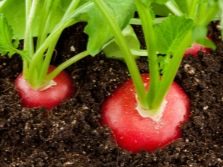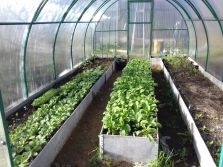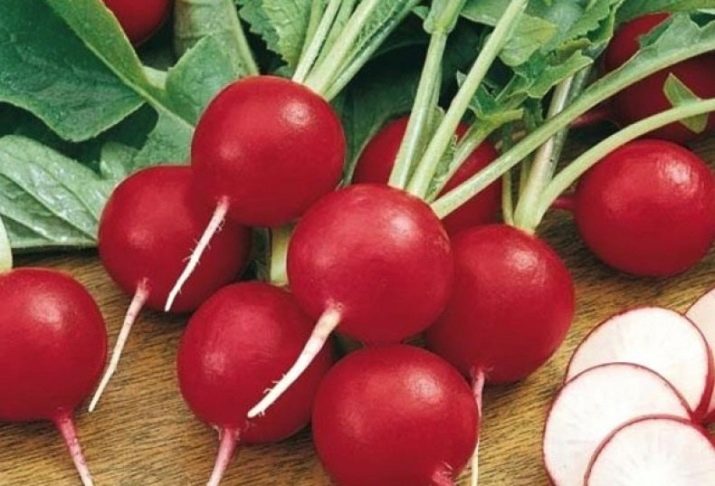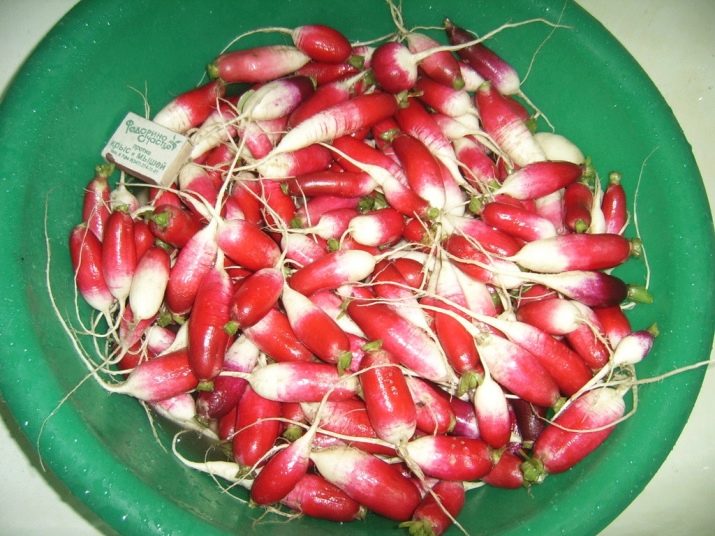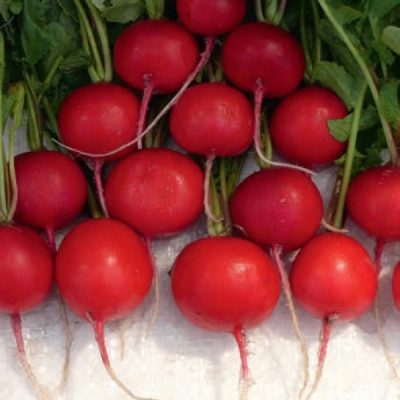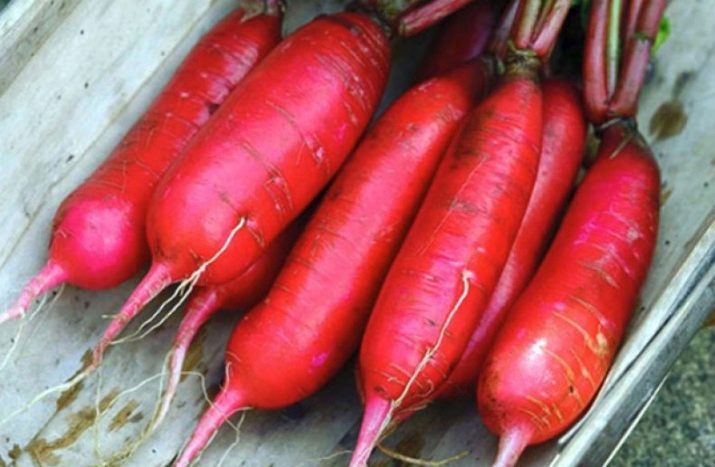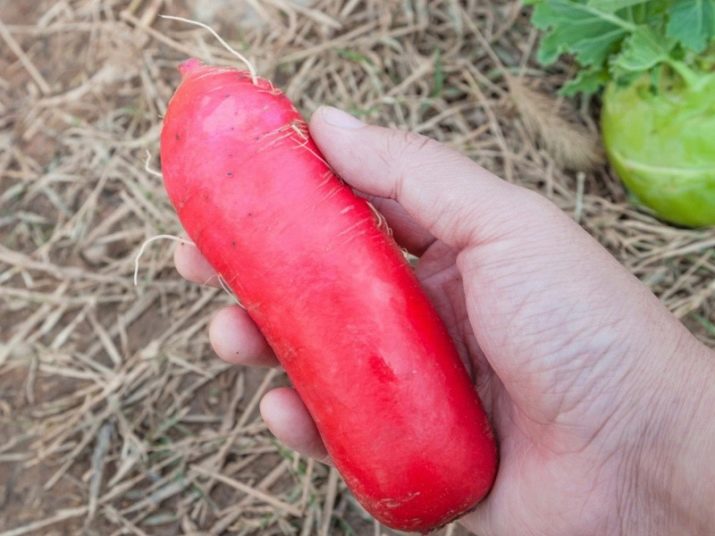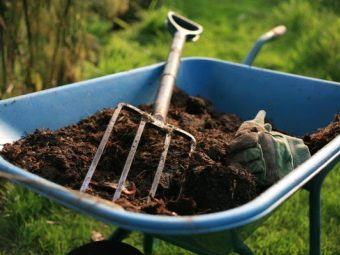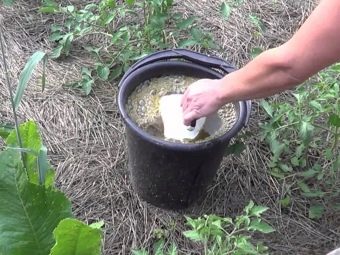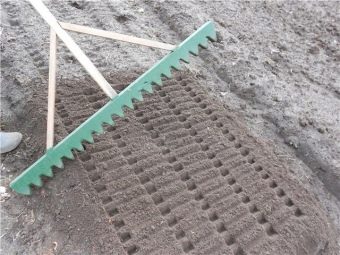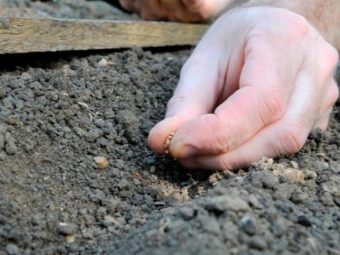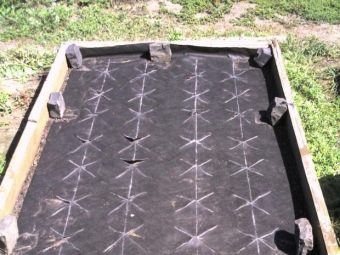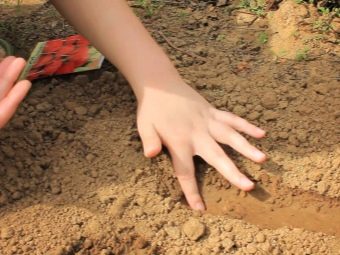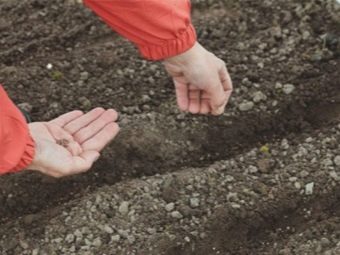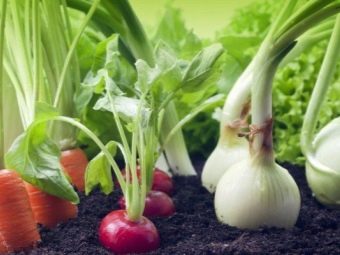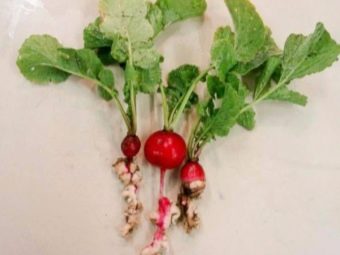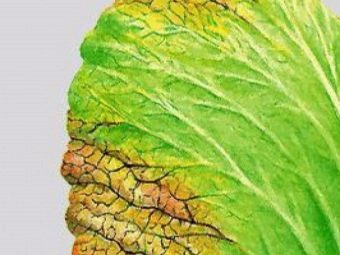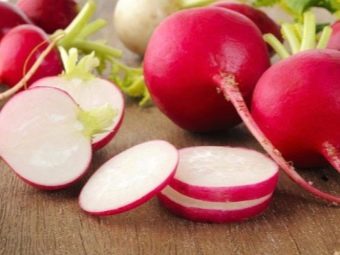How to plant and grow radishes?
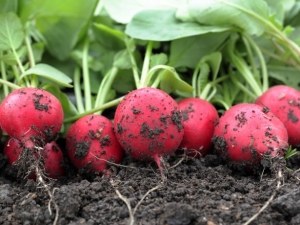
Radish is a fairly common crop in country houses and gardens.The popularity of the root is connected with its unpretentiousness, fast ripening, the ability to plant at any time, and in addition - exceptional taste, nutritional value and usefulness. This is an indispensable vegetable in the springtime, the fruits of which can be enjoyed only when other plants are at the stage of growing seedlings.
Special features
Radish, like its relative cabbage, belongs to the cruciferous family, annual species are the most popular, giving usable fruits and seeds already in the first year of planting, but many prefer two-year varieties - they form roots in the first season, but the seeds can be harvested only on the second. This type of plant is quite rare for the European part of Russia and is mainly distributed in Asian countries and republics.
Usually radish root crops have a rounded or slightly elongated shape, color pink, red, less often purple or white.
Radish can be grown in open ground, and you can plant seeds in a polycarbonate greenhouse.
Consider the most popular varieties of radish.
- "18 days" - superearly variety. The fruit has a cylindrical shape, the color is light pink. The tail is white, the pulp is white with a dense structure. The taste is weakly acted.
- "Heat" - a variety of early ripening, the crop can be harvested within 3 weeks after planting seeds. Fruits have a plus shape of a red-crimson color. The taste of radish is slightly hot.
- "French breakfast" - Another early ripe variety, which also gives ripened fruits on days 21-23 after sowing, taste is mildly sharp.
- Carmen - You can eat these fruits already on the 20th day after planting. The fruits have a round shape of red color, the taste is light, weak-sharp.
- "Cardinal" - This is a mid-season hybrid variety. The fruits are round, the color of the peel is red, the flesh is white, dense.
- Red Giant - the mid-season type of radish, the fruits are formed in 30-40 days, the roots are quite large - the weight of each can reach 150 grams. The peel is red, and the flesh is light pink.
- "Octave" - fruits can be obtained in 1-1.5 months after planting. Fruits are round, white, the internal structure is dense without voids. The taste is soft sharp.
- "Red Giant" - a variety of late ripening, the fruits of which are quite impressive, their weight often reaches 300 grams. The skin is pinkish, and the flesh is white, the taste of the vegetable is sharp.
Many gardeners prefer the variety "18 days", believing that this is the period during which the full ripening of the fruit takes place. This is a common misconception - such a result can be achieved in 2.5 weeks, but only if ideal conditions for growth and development are created - suitable weather, optimal soil and excellent care conditions.
That is why ripening is usually delayed for several days, however, it is not worth retaining the fruits in the hope that they can grow a little longer - a long stay in the soil makes the radish coarse, fibrous, with a large number of voids.
How to select and prepare seeds?
In order to get a good harvest, first of all it is necessary to acquire good viable seeds, it is advisable to apply for this to specialized stores.
After that, it is necessary to calibrate and sort the seed material - seeds of more than 3 cm in size without any external defects - cracks, browning and dents, have the best germination.
The viability of the seeds can be checked in a fairly simple way: the material should be dipped in a strong saline solution for a couple of minutes, stirring with a wooden stick. Those seeds that emerge should immediately be thrown out - there is no life in them and it will not work out to sprout.
Those seeds that remained on the bottom should be washed under cool running water and dried naturally (drying near heating devices is unacceptable).
Selected seeds shortly before planting should be disinfected, which will prevent the possible occurrence of fungal and bacterial infections of the plant.
Most often resort to disinfection in a weak solution of potassium permanganate - for this, the seeds are placed in a gauze bag and immersed in the composition for 15-20 minutes, after which the material is washed and dried again.
In addition, plants respond well to stimulation of growth. Experts recommend soaking future seedlings in “Epin” (at the rate of 2-3 g of the preparation per 1 liter of water) or in “Zircon” (0.25 ml per 1 liter of water). Seeds are kept for 3-4 hours, then dried and prepared for planting.
If you plan to carry out planting in early spring, it will be useful to carry out the procedure of hardening the seeds at home - this will increase germination in the event of frost return. The procedure is quite simple: the planting material is wrapped in a gauze or canvas bag and placed in the refrigerator for 4 hours. After it is taken out and is kept for 24 hours at room temperature.
Such alternation should be repeated many times, until the seeds begin to peck up - and after that they should immediately be planted in moist soil. It is not necessary to linger with the planting works, since during hardening all growth processes become noticeably more active and in the absence of suitable conditions for growth, the seed simply dies.
Soil preparation
Good soil in many ways affects the yield of any vegetable crop and radish is no exception. The plant is quite fastidious to the composition and structure of the soil, since the ripening of fruits occurs in the ground.
In order to create optimal conditions for the growth and development of radish, it is necessary to prepare a site for planting in advance. The best predecessors of the culture will be tomatoes, potatoes, onions and garlic.
In the autumn, the necessary fertilizers should be applied to the land (the quantity is indicated per 1 square meter of the plot):
- rotted manure / compost -10 kg;
- superphosphate - 20 g;
- potassium sulfate - 15-25 g;
- ammonium nitrate - 20 g.
In the spring, you can additionally fertilize the soil with urea, but to bring fresh manure before planting is not recommended - it can attract pests that can destroy the entire crop.
Particular attention should be paid to the removal of weeds - weeding should be deep, otherwise remaining roots in the ground will prevent large and dense fruits from forming.
Radish prefers loose soil, so peat and river sand should be mixed in the dense soil during autumn plowing.
In the spring, the digging is repeated and the beds begin to be prepared - they make small grooves with a depth of 1-1.5 cm, the bottom must be compacted by hand, so that the seeds do not go deeper under the influence of precipitation. The row spacing should be approximately 10 cm.
Planting technology and timing
It is noteworthy that radishes can be sown at any time of the year and even in winter. Although in fairness, we note that it rises only after the air temperature rises to 7-8 degrees Celsius and above.
In the spring, radishes are planted at a time when the air temperature during the daytime hours will not fall below 10 degrees. Optimally, if it is 14-16 degrees - in this case, you can wait for the first shoots 7 days after planting. And if the weather indulges with heat and the air warms up to 20 degrees or more, then the sprouts appear already after 3 days. Under these conditions, the vegetable reaches maturity after 21 days.
However, if the temperature drops, there will be no misfortunes, young shoots retain their vitality and ability to develop even when frozen on the ground, but maturation will occur in this case a little later.
This ability of the root allows you to plant it at any time - and this is the difference between the culture of agricultural and all other vegetables.
Another feature of the optimum period for planting in the springtime is the soil moisture parameter. As a rule, after the snow melts, the soil is saturated with moisture, which is a strong stimulator of seed germination; therefore, after the onset of heat, it is not worth waiting for the earthen clod to dry out.
Spring planting radish has a great advantage over planting at any other time - the absence of pests. Indeed, the earlier the root crop is planted, the lower the probability of encountering a cruciferous flea, the tiny worms of which bite into ripening fruits, which significantly impairs their appearance and taste characteristics.
Most often, in the suburbs and the central part of our country, warmth comes at the end of March - it is at this point that the sowing campaign can be opened. Many gardeners plant plants every 10 days in order to get a continuous harvest throughout the season.
In the Leningrad region, the beginning of sowing falls on the second decade of April, and in the Siberian regions and in the Urals, it is better to postpone planting radishes in open ground for June.
In the Kuban, in the Stavropol region, the Rostov region, the Crimea, as well as in Ukraine and Belarus, the sowing season has been carried out since mid-May, because the soil is warming up much earlier in these southern latitudes.
In the summer, the planting season can continue at full speed. As well as in spring, seeds can be planted every 10-14 days in the so-called conveyor way. In the hot season, landing work is best done in the morning or in the evening. In addition, from 19 o'clock in the evening and until 7 in the morning the garden bed will have to be covered with dark fiber or boxes to protect it from sunlight. In August, the light day is significantly shortened, so the need for shelter is eliminated.
Planting work can continue in September, and starting in October, planting should be stopped, even if the weather is warm and sunny. During this period, the probability of a sharp decrease in temperature is great, so the radish often does not have time to ripen before the onset of a cold snap. However, this is the right time to prepare the beds and the ground for the formation of winter holes. By the way, November is considered the most suitable period for winter planting, at this time the earth freezes through 5 cm or more, otherwise the seeds can germinate and the frost will simply ruin the plant.
The seeds that were planted before winter sprout 2-3 weeks earlier than spring - and this is a definite plus, since fresh vitamins at a time when young greens are just beginning to sprout, are very much appreciated.
Over time, landing settled. Now we will dwell on agricultural technology. The earth should be dug up and buried with a rake, and then the most interesting thing is landing.
Seeds deepen into the ground in several ways.
- The most common option can be called the laying of seeds in bulk. Of course, this is the most easy-to-use way, but at the same time the most uneconomical - radish seeds are distinguished by high germination. Even the oldest materials, as a rule, sprout by 99%, therefore, when sprouts appear, you need to plant them - a pick will be required, which has its own risks. First, when pulling out extra shoots, you can damage the roots of those plants that remain in the ground and in this case they stop developing. Secondly, if you linger with thinning even for 3-4 days, then the remaining sprouts will grow, instead of directing their vitality to the formation of fruits.
- Some gardeners prefer to grow radish seedlings - A seedling is prepared at home on the windowsill or on the balcony. Of course, in this case, you can avoid unnecessary trouble with picking and transplanting, but keep in mind that radishes belong to the ripening vegetables. From the appearance of the first shoots to the full ripeness of the root crops, it takes about 3-4 weeks, if you spend this short time on uprooting young shoots and planting them in another place, the plant simply does not have time to gain the necessary mass and juiciness.
A much more accurate method of landing will be the following:
- form a bed with grooves;
- fill the ground with water;
- spread out the seeds at a distance of 3-4 cm relative to each other;
- sprinkle with dry soil;
- press your hand.
It is not recommended to sprinkle the seeds with wet earth, since in this case a dense crust forms on the surface, and it is impossible to loosen the soil in which the roots are germinated, in order to avoid damage to the underground part of the vegetable culture.
If the planting is done correctly, that in 4-7 days shoots will appear.
Many experienced gardeners greatly facilitate their work, using ribbons for planting - they are simply laid out along with the seeds laid out on them along the bottom of the beds and sprinkled them on top with moist and then dry ground. Instead of tapes, you can use toilet paper, in which seeds are attached with the necessary pitch using ordinary paste and wooden toothpicks.
Much more convenient is the way in which egg containers are used. With this approach, the seedlings are placed at the desired distance from each other, the fruits are smooth, neat and what is important - even the thinning of plantings is not required.
Let us examine in detail the sequence of actions.
- To begin with, they prepare a bed in the usual way: they dig and loosen.
- In cardboard cells cut bottom and laid on the ground with the holes down, and then slightly pressed. The cells are filled with water, and after it is absorbed, a seed is laid in each well. Next, planting material covered with earth and moisturize abundantly.
With this approach to planting, the seeds germinate with standard activity, however, the planting pattern will be followed automatically.
What can be planted next to the radish?
Each gardener knows well that for the successful growth and development of plants it is very important to observe the principles of good neighborhood. As for radish, it is best to grow it with different varieties of salads - these crops protect it from the adverse effects of the earthy flea. It will be right to plant radishes next to legumes and nasturtium, which can significantly improve its taste.
Keep in mind that radishes do not like direct sunlight, so it would be nice to shade it with tall plants. That is why the culture is often sown near tomatoes, parsley, onions, chard and garlic. Not bad radish is next to strawberries, but radishes are not sown near hyssop.
Care
Growing radish does not require any special efforts, but, nevertheless, there are rules and recommendations that should be followed.
After sowing the seeds, the ground should be watered daily until the first shoots appear. The moisture level in the soil should be at the level of 80%, therefore, moisture needs not only seedlings, but also adult plants - if the water is not enough, the fruits will be bitter.
At the same time, it is important to avoid stagnant fluids, since in marshy land there is a high probability of being affected by such ailments as the keel or the black leg. Irrigation should be as uniform as possible, with any sudden change in the irrigation pattern, the roots will immediately crack.
Moisten the planting should be twice a day - early in the morning and in the evening, when the heat subsides. In order to maintain the required level of humidity, especially in summer, the land on the site can be mulch sawdust or hay.
Growing root crops need fertilizer. The plant responds well to both minerals and organics. It works very well on manure radish, but just rotted - fresh plant is contraindicated. From him the culture begins to shoot out and the fruits grow empty inside.
Fertilizers are applied in liquid form. After each, the ground should be mulched peat - this will make the soil more airy, and the roots will turn out crisp and juicy, without coarse fibers and voids.
If you properly care for the plant, you can grow a good crop of tasty and delicious fruits.
Diseases and pests
Radish often becomes infected with diseases and is attacked by garden pests that can destroy the entire crop.Considering that fruit ripening happens rather quickly, each day of the disease can become “fatal” - the treatment of radish should begin immediately when the first signs appear.
Radish has several common offenders.
Quila
Signs of such a disease is the appearance of growths and blisters on the surface of the root, as a result of which the fetus acquires a yellow color and a hanging structure.
Sick plant should be dug and burned, and the ground in which it grew, sprinkled with slaked lime. This site can be used for radishes no earlier than in 4 years.
Mealy dew
Defeat, in which a white patina appears on the ground part of the plant, with time it becomes light brown.
It is rather difficult to treat powdery mildew; therefore, it is best to pay special attention to preventive measures — to do this, you must observe crop rotation and treat the seeds with fungicidal compounds before sowing.
Bacteriosis
Dangerous disease, a symptom of which is the appearance of mucus on the fruit, which are beginning to produce a sharp putrid odor. All this is accompanied by a sharp yellowing of the sheet plates. In this case, you can correct the situation using Bordeaux fluid.
Garden pests cause no less damage to the plant. It is worth noting several pests that most often attack plants.
Cruciflo flea
This is a small insect of dark color with a characteristic metallic shade. It causes damage to the leaves, thereby disrupting photosynthesis and, ultimately, leading to the death of the entire plant.
To combat the front sight use insecticides.
Whitefish
Damage to radish caused by larvae that eat the tops of the edges or gnaw through holes in the leaves. In any specialty store you can find chemical and biological agents that successfully fight whitefish.
Harvesting and Storage
Root vegetables are harvested as the radish ripens. The fruits are pulled out on a selective basis, for this you need only to grasp the tops and pull up. First of all, those whose leaves have reached the maximum size for the planted variety, and the smaller ones are left to ripen, are harvested. However, if for any reason growth stops, it makes sense to pluck the fruit in the condition in which they are - they will not become larger, and too long a delay in the ground will lead to a significant deterioration in the structure of the fruit and their taste.
Harvest can be eaten immediately or put in the refrigerator, where it can be stored for two weeks.
Later varieties can be kept in the cellar - under these conditions they retain their appearance and taste for up to two months.
How to plant radishes, see the following video.



